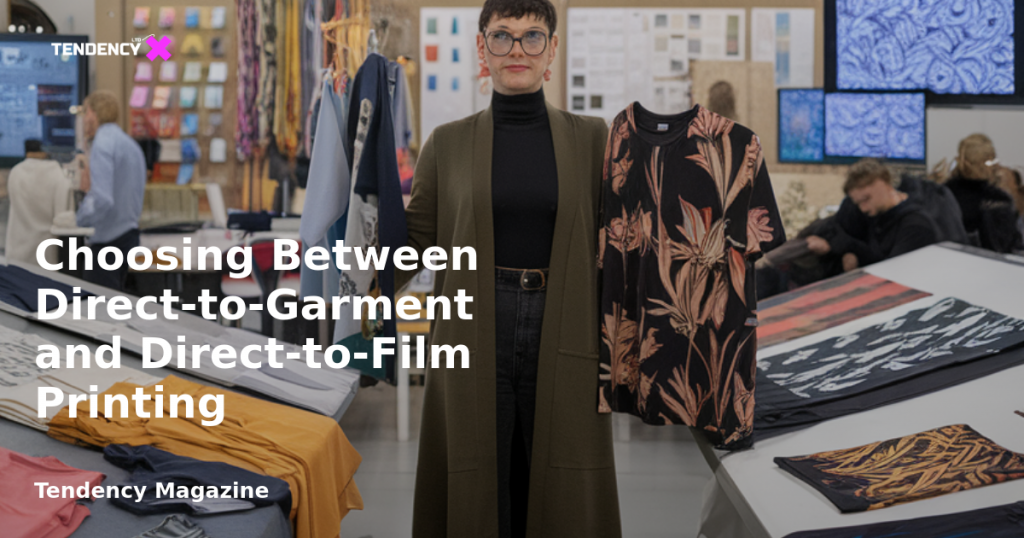Choosing Between Direct-to-Garment and Direct-to-Film Printing

Table of Contents
- Introduction to Printing Technologies
- What is Direct-to-Garment Printing?
- What is Direct-to-Film Printing?
- Comparing DTG and DTF Printing
- Frequently Asked Questions
- Conclusion
Introduction to Printing Technologies
The evolution of printing technologies has transformed the way we create and reproduce images. From the groundbreaking invention of the movable type printing press by Johannes Gutenberg in 1440 to today’s advanced digital printing methods, the journey has been remarkable. Modern printing is not just about speed; it’s about versatility and quality. Today, digital printers can print on various substrates, from paper to fabric, using different techniques that cater to diverse creative needs.
What is Direct-to-Garment Printing?
Direct-to-Garment (DTG) printing is a popular technique for producing detailed designs on textiles such as t-shirts and sweatshirts. This method allows for high-resolution prints, including realistic photographs, on both light and dark fabrics. Unlike traditional methods like screen printing, DTG applies ink directly to the fabric, eliminating the need for stencils.
The DTG process involves creating or selecting a design, preparing the fabric, and using a DTG printer to apply water-based ink directly onto the material. The printer functions similarly to an inkjet printer, reading digital files and producing images with precision. Typically, natural fiber fabrics like cotton are used, as they absorb the ink effectively, resulting in vibrant and detailed prints.
What is Direct-to-Film Printing?
Direct-to-Film (DTF) printing is an innovative technique that transfers images onto textiles and accessories. Known for its vibrant colors and intricate designs, DTF printing uses a digital file, a DTF printer, heat transfer film, curing powder, and a heat press. The process involves printing the design onto a specialized film, applying an adhesive powder, and curing it with heat. The design is then transferred onto the fabric using a heat press.
DTF printing is praised for its efficiency and reduced waste, as it uses the exact amount of ink needed for each design. This method is compatible with a wide range of fabrics, including synthetic materials, making it a versatile choice for various applications.
Comparing DTG and DTF Printing
When choosing between DTG and DTF printing, several factors should be considered:
Material Compatibility
DTF printing excels with a variety of fabrics, including synthetics, due to its ability to bond with different fibers. DTG is best suited for natural fibers like cotton, as they absorb the ink more effectively, resulting in crisp designs.
Color Quality
Both methods use CMYK color processing, but DTF tends to produce more vibrant prints. DTF’s image transfer process creates a layer of ink on the fabric’s surface, enhancing color saturation. In contrast, DTG prints may appear slightly muted as the ink is absorbed into the fabric.
Product Texture
DTG prints are typically softer and more pliable, while DTF prints can feel slightly stiff due to the solid layer of ink on the fabric’s surface. This difference is particularly noticeable in larger designs.
Print Durability
DTF is generally more durable across various fabrics, especially synthetics, and is known for its wash durability. DTG is ideal for cotton and lighter colors but may not be as resilient on synthetic materials.
Production Speed
Both methods are suitable for small and large production runs, but DTF offers a slight edge in efficiency, especially for bulk orders. The multi-step DTF process can be streamlined using assembly-line techniques, making it faster for large-scale projects.
Frequently Asked Questions
- Which one is better: DTF or DTG? The choice depends on your specific needs. DTG is excellent for soft, durable designs on natural materials, while DTF is ideal for vibrant, crisp designs on a wide range of products.
- Does DTF last as long as DTG? Both are durable, but DTF designs are slightly more prone to cracking if exposed to hot water. Proper care, such as washing with cool water, can enhance longevity.
- Do DTF and DTG feel the same? DTG prints are generally softer, while DTF prints can feel stiffer. However, DTF prints may soften after several washes.
Conclusion
Choosing between Direct-to-Garment and Direct-to-Film printing ultimately depends on your project’s requirements and your personal preferences. DTG is perfect for those who prioritize softness and detail on natural fabrics, while DTF offers unmatched versatility and vibrancy for various materials. By understanding the strengths and limitations of each method, you can make an informed decision that best suits your creative vision and business objectives.
2025 Tendency LTD. All rights reserved.

